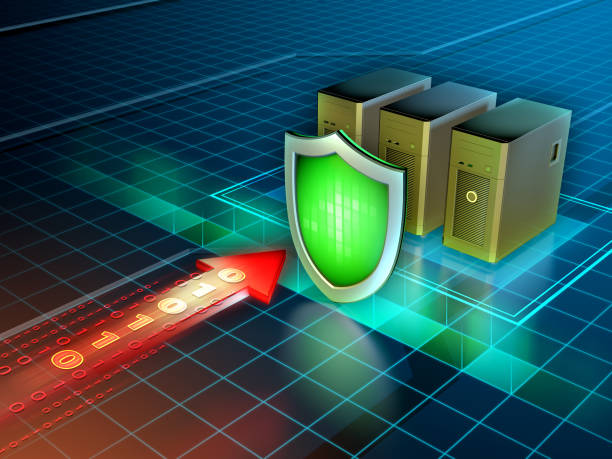What Is A Backdoor In Cyber Security?
In the realm of cybers security, the term “backdoor” refers to a secret method of accessing a computer system or software program without the user’s knowledge or consent. Backdoors are often installed by hackers or other malicious actors as a means of circumventing security measures and gaining unauthorized access to sensitive data or systems.
Backdoors can take many forms, from hidden user accounts to malicious code embedded in software updates. Some backdoors are intentionally created by software developers to provide access to a system in the event of an emergency, but these are typically well-documented and secured with strict access controls. The vast majority of backdoors are created with malicious intent and are used to steal sensitive data, disrupt services, or spread malware.
As a cyber security analyst, it is crucial to be aware of the various types of backdoors and the methods used to exploit them. Backdoors can be difficult to detect and can remain hidden in a system for long periods of time, making them a significant threat to the security of organizations and individuals alike.
In order to protect against backdoor attacks, cybersecurity professionals must stay up-to-date with the latest threat intelligence and utilize a range of security tools and techniques to identify and mitigate potential risks. This may include conducting regular security audits, implementing multi-factor authentication, and educating users on best practices for staying safe online.
By taking a proactive approach to cybersecurity and staying vigilant against backdoor attacks, organizations can help safeguard their sensitive data and systems from malicious actors.
What Is Apt In Cyber Security?
Cybersecurity has become a major concern for individuals and organizations alike in recent times. With the increasing dependency on technology, the risk of cyber attacks has also gone up significantly. This has led to the emergence of the field of cybersecurity, which is dedicated to protecting systems, networks, and data from unauthorized access, theft, or damage.
At its core, cybersecurity is all about safeguarding sensitive information from cybercriminals who are always looking for vulnerabilities to exploit. Cybersecurity experts, also known as cybersecurity analysts, play a critical role in this domain. They are responsible for identifying potential security threats, implementing security measures, and monitoring networks to ensure that they are secure.
Apt in cybersecurity refers to the level of expertise and skills required to be effective in this field. Cybersecurity professionals need to possess a deep understanding of the latest cybersecurity threats, technologies, and tools. They must also stay up-to-date with the latest trends and best practices in the field.
To become a cybersecurity analyst, individuals typically need to have a degree in computer science, information technology, or a related field. However, certifications such as the Certified Information Systems Security Professional (CISSP) and Certified Ethical Hacker (CEH) can also be valuable.
What Is Enumeration In Cyber Security?
Enumeration in cybersecurity refers to the process of extracting information about a target system or network by systematically probing it for vulnerabilities. It is a critical step in the reconnaissance phase of a cyber attack, allowing attackers to identify potential entry points and weaknesses that they can exploit to gain unauthorized access.
Cybersecurity professionals, including cybers security analysts, use enumeration as a proactive measure to identify vulnerabilities before attackers can exploit them. They conduct enumeration by employing various techniques, such as port scanning, network mapping, and vulnerability scanning. These techniques provide valuable insights into the target system’s configuration, operating systems, network topology, and potential vulnerabilities.
Enumeration is a crucial aspect of cybersecurity, and it plays a critical role in protecting organizations’ systems and data from cyber threats. Without proper enumeration, organizations cannot adequately identify and address vulnerabilities, leaving them vulnerable to cybers security.
As a cybers security analyst, it is essential to have a deep understanding of enumeration techniques. And how to leverage them to secure systems and networks. With the ever-evolving threat landscape, it is vital to stay up-to-date. With the latest enumeration techniques and technologies to effectively defend against cyber attacks.
What Is Gdpr In Cyber Security?
The General Data Protection Regulation, or GDPR, is a set of data protection rules. That apply to all companies operating within the European Union. It is designed to protect the privacy and personal data of EU citizens. And has significant implications for companies operating in the digital realm.
In the realm of cybersecurity, GDPR compliance is a critical consideration. The regulation imposes strict requirements on companies when it comes to data security. Mandating that they take all necessary steps to protect personal data from unauthorized access or disclosure. This includes measures such as encryption, access controls, and regular security audits.
For cybersecurity professionals, GDPR compliance is a complex and challenging issue. Cybersecurity analysts must have a deep understanding of the regulation and its requirements. As well as the technical expertise necessary to implement effective security measures cybers security.
One of the key challenges facing cybersecurity professionals in the context of GDPR is the need to balance data. Protection with the need for data accessibility. And used in a way that complies with GDPR rules and regulations.
Overall, the impact of GDPR on securitys cyber is significant and far-reaching. It is critical for companies to take the necessary steps to comply. With the regulation and protect personal data from cyber threats. For cybersecurity professionals, the challenge is to develop and implement effective security measures. That meet the requirements of GDPR while also allowing for the free flow of data necessary for business success.

